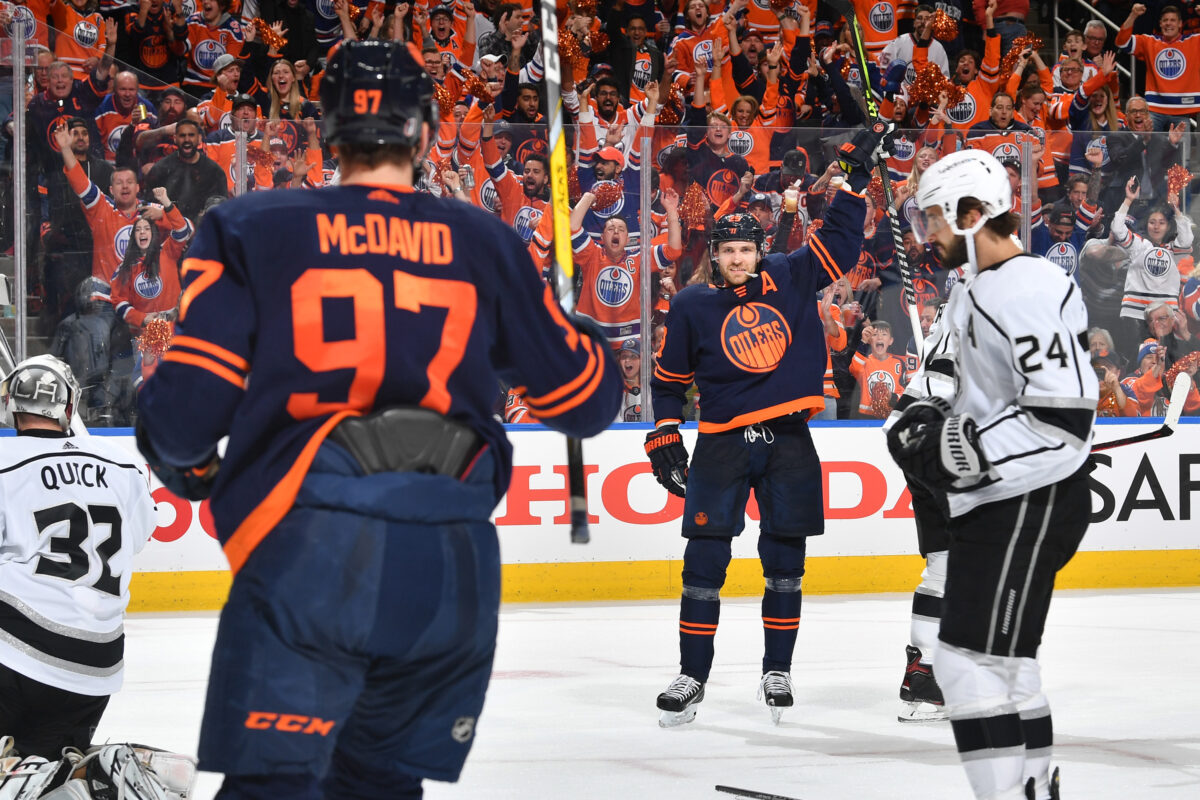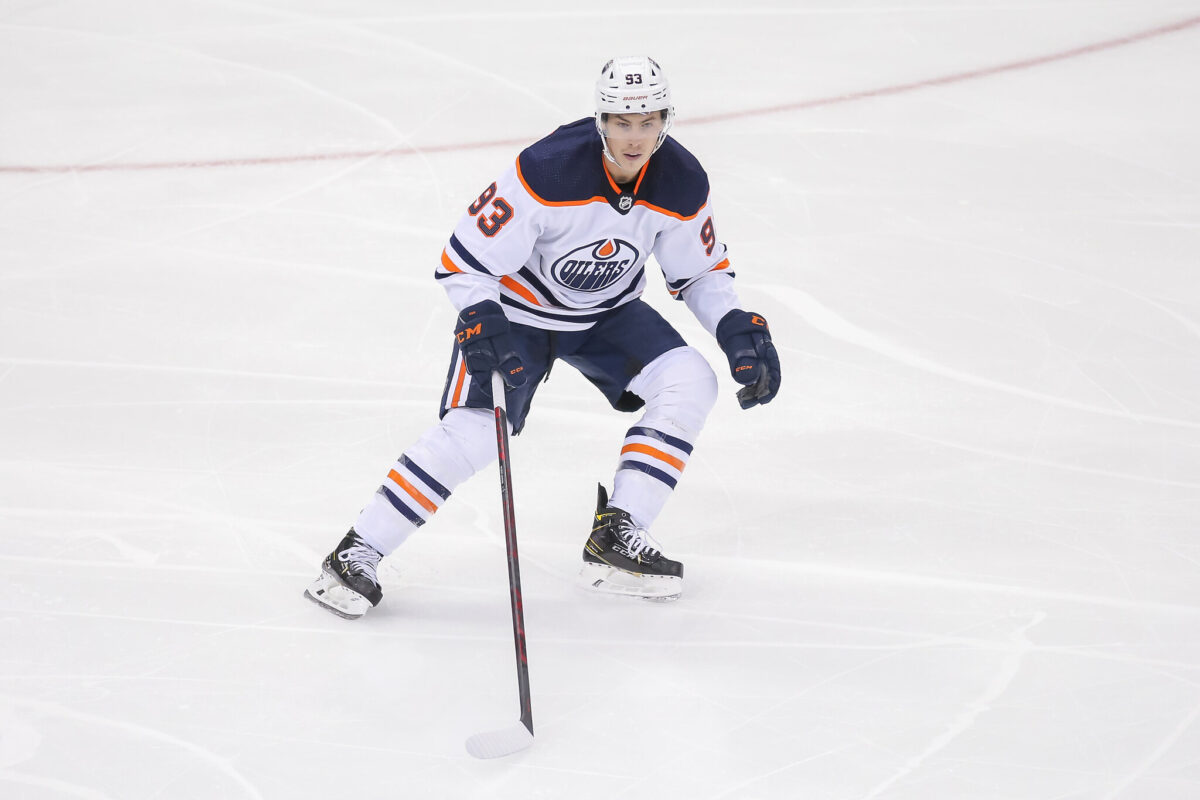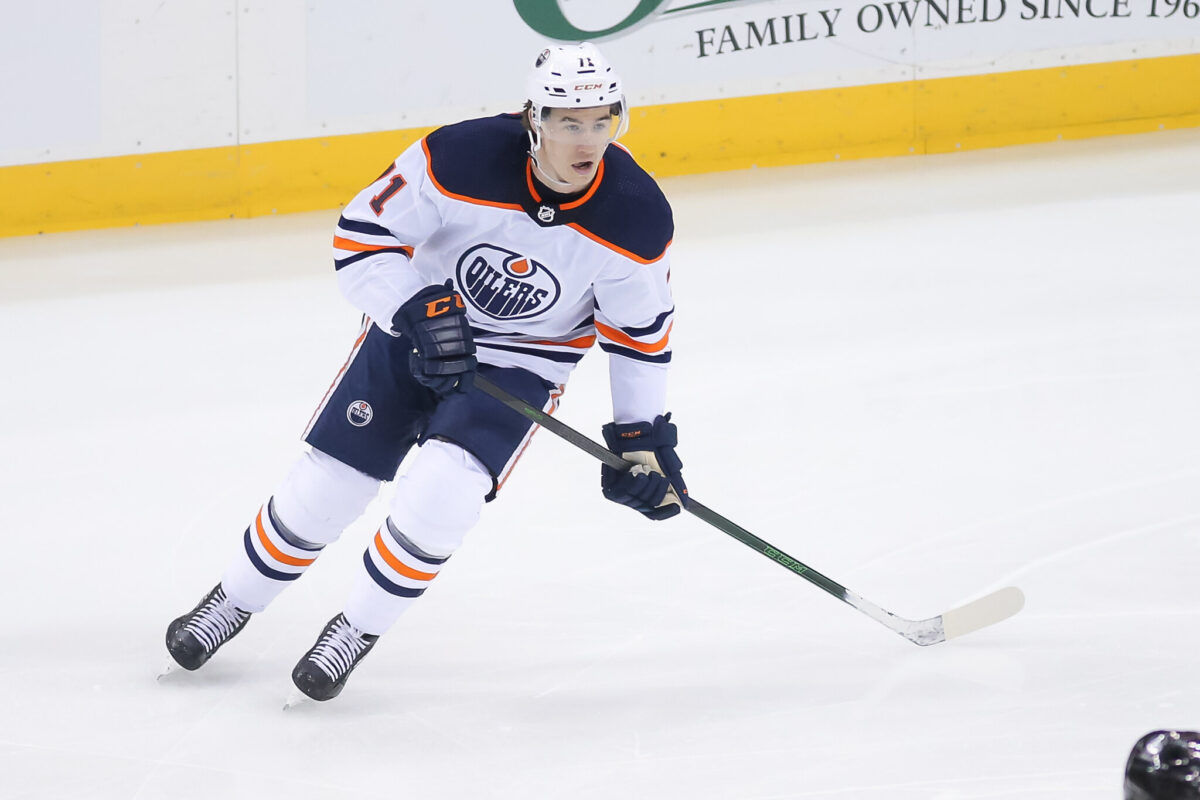The Edmonton Oilers have started the season 2-2-0 but stepped up and defeated their toughest opponent of the young season in the Carolina Hurricanes. This start is not what was expected of the Stanley Cup contending team, but it is also very early and things are still being worked out. A bright spot through the four games has been the special teams as it has helped the Oilers to where they are and should provide confidence for the rest of the season.
Related: Oilers Have Stiff Competition Within Underrated Pacific Division
Special teams are so important every season. In years past, the Oilers haven’t had the personnel they have on their team this season, so the five-on-five play lacked. One area of their game that was always there was the power play to pick up the slack and help the team win. And though the penalty kill is never at the very top of the league like the power play is for the Oilers, it is effective at the right times and can score Edmonton goals. Let’s take a closer look at how each has come into play so far and what’s going right and wrong.
Oilers’ Power Play Dominant as Ever
The Oilers’ power play is off to a great start at 37.5 percent. That’s good for third in the league, but they have the players to continue at a very high percentage throughout the season, Leon Draisaitl and Connor McDavid especially. The team has scored six power-play goals in the first four games on 16 chances, a couple of which were cut very short. With two of the best players in the world working the puck around with even more space to produce, teams aren’t likely going to stop them.
Last season Draisaitl broke the Oilers’ record with 24 power-play goals. That ranked him second in the league behind Chris Kreider who also broke the franchise record for the New York Rangers last season. Draisaitl has now scored at least 15 power-play goals in four consecutive seasons and already both of his goals have come on the man advantage this season. Not only does he regularly place at the top of the league in that regard, but he and McDavid also pace the league in power-play points yearly.

McDavid has finished first in power-play points in the past two seasons with Draisaitl close behind him. The season before that, 2019-20, they flipped and McDavid was one point behind Draisaitl as the top two power-play producers in the league. With just these two combined they have amassed 241 power-play points in the past three seasons, 124 for McDavid and 117 for Draisaitl. That leads third-place Jonathan Huberdeau by 26 over that span.
But it’s not just McDavid and Draisaitl doing all the work. Sure, they are the largest factors, but the Oilers have two great options on the point in Tyson Barrie and Evan Bouchard. Both can get shots through, score, and pass the puck well. Barrie may be the go-to guy on the first unit, but the Oilers started the trend of switching between them last season and have started it early this season in anticipation of Bouchard taking over that role full-time.
The other mainstay on the top unit is Ryan Nugent-Hopkins who may be the most impactful special teams player the Oilers have. Not only is he sorely missed in his spot on the power play if he isn’t there, but he is also very effective at killing penalties. He may only have two power-play assists thus far, but his role is key in zone entries up the left side of the ice to not only get over the blue line, but keep control of the puck. He has a sneaky shot and is already on his way to bouncing back from an underwhelming season in goals.
You may also like:
- Oilers’ Skinner in Line for Vezina Trophy Winning Season
- Oilers: 8 GMs Who Would’ve Been Better Hires Than Stan Bowman
- NHL Rumors: Oilers, Maple Leafs, Capitals, Kuznetsov News
- Edmonton Oilers’ Point Projections for 2024-25
- Edmonton Oilers Name Stan Bowman General Manager
The final role on the power play that is just as important as the rest is the net-front/puck-retriever. This role was up for grabs last season between Zach Hyman and Jesse Puljujarvi. Both did well but Hyman was eventually chosen. This season the Oilers have another battle going as Evander Kane is just as good in that role as anyone. Kane is the better goal-scorer and has a larger/stronger body in front of the net, while Hyman is aggressive at jamming pucks in and is the better puck-retriever. The Oilers haven’t made their choice yet and have gone with both. The power-play has worked with any of these combinations of players I’ve mentioned, so the Oilers are in good hands and should remain at the top of the league this season.
Penalty Kill Succeeding at Timely Moments
When you think of successful penalty kills, oftentimes it’s of units that can stop at least 80 percent of chances. Though the Oilers have been effective offensively while down a man, the penalty kill percentage is just 76.5. The effectiveness has come because they have shut opponents down at the right time as well and have scored two shorthanded goals already. Those add insult to injury if the penalty is also killed off.

The most impressive showing for the Oilers on the penalty kill thus far was in their first game. They went 7/8 and completely shut the Vancouver Canucks down when they had ample opportunities to put the game out of reach or make it much harder for a comeback to mount for the Oilers.
The Oilers have gotten a shorthanded goal in both of their wins this season and their units just continue to show how dangerous they can be. With so many options to kill penalties, any player out there could create offence if there is an opportunity. The shorthanded goals have come from Darnell Nurse and Ryan McLeod this season with five different players recording a shorthanded point. The most effective and dangerous duo for the Oilers is Nugent-Hopkins and Hyman. They formed chemistry immediately last season and combined for four shorthanded goals and nine points, adding to that total in the playoffs. The strength of the Oilers’ penalty kill is that their top players can kill penalties, but aren’t required to at all times. They will settle in and even though they may not finish with the best penalty kill in the league like they should on the power play, it will get them by.
Even-Strength Production Not a Big Cause for Concern
Of the 16 goals the Oilers have scored, eight have been at even-strength. This may be a cause for concern for a team that doesn’t have the power play and even penalty kill that can sustain the production, but the Oilers do. This is also the best forward group the team has seen in a long time. There’s no shortage of talent to play in the Oilers’ top-nine and since chemistry takes time to form, goals will start to come.
Speaking of chemistry, Nugent-Hopkins was put back on Draisaitl’s wing in the team’s fourth game of the season and he produced four points (from “McDavid, Nugent-Hopkins’ four-point nights lead Oilers to 6-4 win over Hurricanes”, The Globe and Mail, 10/21/22). This should be a sign to keep those two together for now. They have played a lot together over the past couple of seasons and if something works, don’t change it.
Kane was put back with McDavid and the captain also put up four points in their last outing against the Carolina Hurricanes. Add the feisty puck-retriever in Kailer Yamamoto to that line and it should continue to be a recipe for success.

The third line needs mentioning as well since the trio of Puljujarvi, McLeod, and Warren Foegele made an appearance and played very well. This line was put together in the playoffs last season and despite little offence, they had tons of energy. They once again showed that energy and if they’re kept together, should start to see results. These lines were put together in the absence of Dylan Holloway, so things may change again upon his return.
I’ve liked what I’ve seen from both of the Oilers’ special teams early in the season. The even-strength play is bound to step up with the personnel they have. It may be a bit unreasonable to ask their power play to keep producing at the current rate even though they sustained an even better rate deeper into the season in 2021-22. They can ask for more defensively from their penalty kill, but bad bounces are bound to be the cause of some goals against. Overall, the Oilers are in a good spot four games into the season and are only going to get better as it goes along.
